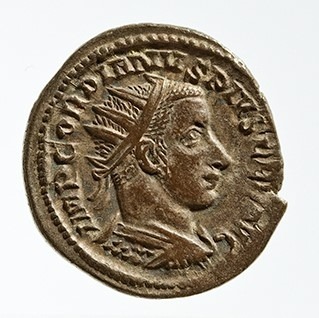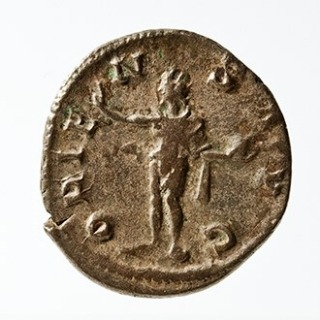Antoninianus of Gordianus III - 1966.59
Acquisition number:
1966.59
Title: Antoninianus of Gordianus III - 1966.59
Culture or period: Roman Imperial
Date: AD 242-244
Material: Metal - Copper-silver alloy
Object type: Coins - Roman
Acquisition number: 1966.59
Dimensions: 22mm (w)
Origin region or location: Turkey
Display case or on loan: 7
Keywords: Coin, antoninianus, Roman, Imperial, Gordianus III, Sol, Syria (Roman province), Antioch, Roman Syria








